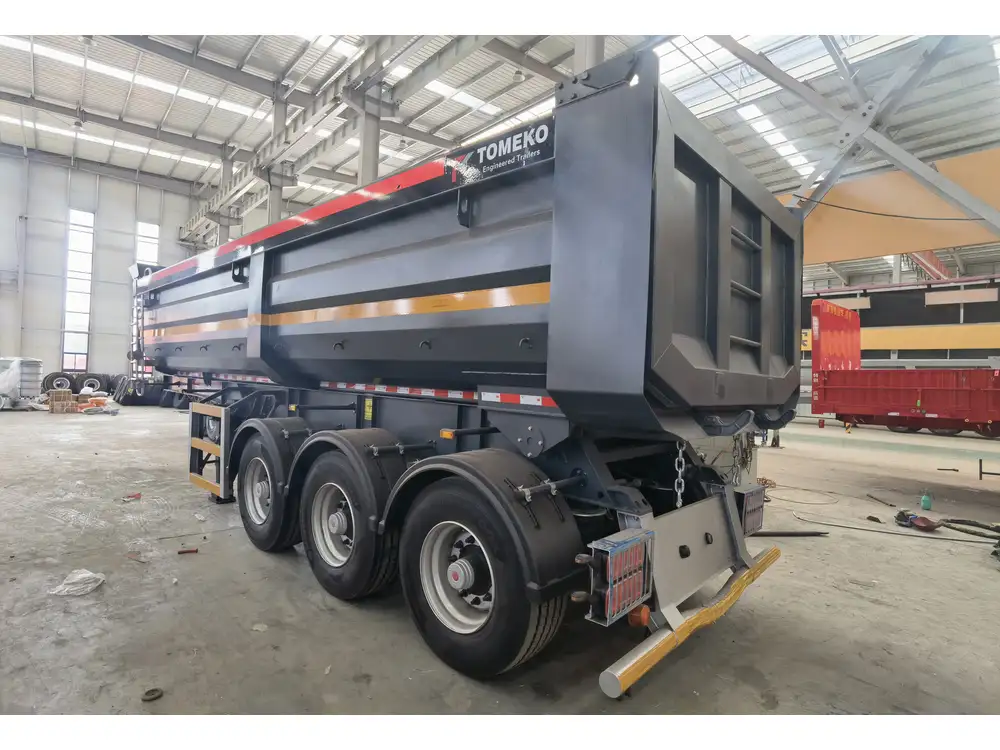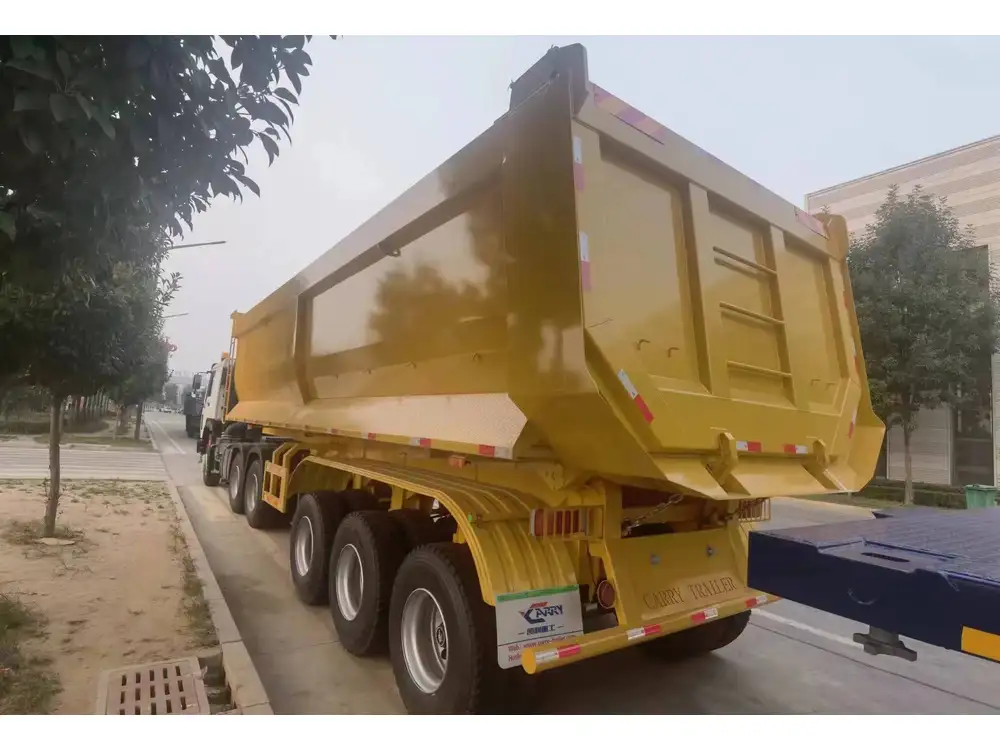Insuring a stationary semi-trailer is a critical process that requires careful consideration of several factors, such as coverage options, potential risks, legal obligations, and specific business needs. In this guide, we will explore everything you need to know about obtaining the right insurance for your stationary semi-trailer, ensuring that both your investment and your potential liabilities are adequately protected.
Understanding the Importance of Insurance for Stationary Semi-Trailers
Insurance for stationary semi-trailers serves multiple purposes:
Risk Management: Protects against damage due to accidents, theft, or natural disasters.
Liability Coverage: Covers potential legal costs arising from third-party claims related to injuries or damages caused by your semi-trailer.
Asset Protection: Ensures that your investment is safeguarded, providing peace of mind and financial stability.
Types of Coverage You Need to Consider
When insuring your stationary semi-trailer, it’s crucial to be aware of the different types of coverage available. Here’s a detailed breakdown:
| Type of Coverage | Description | Considerations |
|---|---|---|
| Liability Insurance | Covers damages or injuries to third parties resulting from your trailer’s use. | Minimum coverage limits to meet state laws. |
| Comprehensive Insurance | Covers damage to your trailer from non-collision incidents like theft or vandalism. | Critical for safeguarding your investment. |
| Collision Insurance | Covers damages resulting from collisions. | May be necessary if the trailer is accidentally damaged. |
| Cargo Insurance | Protects goods being transported on or in your trailer. | Important for operations involving freight shipments. |
| Physical Damage Insurance | Covers repairs to your trailer due to an accident or similar events. | Protects against costly repairs and replacements. |
| Pollution Insurance | Essential for trailers transporting hazardous materials. | Required for compliance with environmental regulations. |

Assessing Risks and Coverage Needs
Understanding the unique features and operations of your stationary semi-trailer helps in assessing risks. Here are some essential factors to consider:
- Location of the Trailer: Trailers stored in high-crime areas may be more susceptible to theft.
- Usage: Even if the trailer is stationary, regular inspections or use could expose it to risks.
- Value of the Trailer: Knowing your trailer’s market value helps gauge the necessary coverage amount.
- Type of Load: Trailers carrying sensitive or high-value cargo require more extensive coverage options.
Steps to Insure a Stationary Semi-Trailer
Step 1: Analyze Your Coverage Requirements
Begin by evaluating your needs based on the aforementioned coverage types. Consider potential risks and the value of the assets you need protection for.

Step 2: Research Insurance Providers
Comparison Shopping: Gather quotes from multiple providers. Online insurance comparison tools can help streamline this process.
Evaluate Specialization: Look for insurers specializing in commercial vehicle insurance, particularly those experienced with semi-trailers.
Step 3: Gather Necessary Information
Prepare along with your application:
Personal details: Legal entity registration, business address, and contact numbers.
Trailer information: Make, model, year, identification numbers (VIN), current market value, how long you expect to keep the trailer stationary, and any modifications made to it.
Step 4: Consult with an Insurance Agent
An insurance agent can help clarify complexities associated with various policies. Discuss your requirements, budget, and any specific concerns you have regarding coverage.

Step 5: Review the Quote and Policy Terms
Assess the coverage limits and exclusions in detail.
Verify if the terms align with your operational needs and financial capabilities.
Step 6: Secure Your Policy
Once you have chosen a provider and are satisfied with the coverage plan, proceed with securing your insurance policy. Make sure to keep a copy for your records.
Step 7: Maintain Your Policy
Regularly review your policy, especially if circumstances change, such as an increase in the trailer’s value, changes in usage patterns, or updates to local laws that might affect insurance requirements.

Common Pitfalls When Insuring a Stationary Semi-Trailer
Inadequate Coverage
Opting for the minimum required coverage can leave you exposed to significant liabilities in case of accidents or claims.
Ignoring Additional Riders
Certain situations may require specific coverage, like cargo insurance if transporting goods. Failing to add such riders might neglect important protections.

Not Updating Policies
Changes in regulations or your operational strategies should prompt a review of your policies. Always ensure your coverage reflects your current needs.
Skimping on Legal Requirements
Each state has specific legal requirements for insuring commercial vehicles. Skipping these can lead to fines or penalties.
Frequently Asked Questions

What is the average cost to insure a stationary semi-trailer?
The average cost varies widely based on factors such as location, usage, value, and type of coverage chosen. A comprehensive policy could range from a few hundred to several thousand dollars per year.
Can I insure a semi-trailer that is not in use?
Yes, you can obtain comprehensive coverage even when your semi-trailer is stationary. It is crucial to discuss your specific situation with your insurer.
Do I need liability insurance if my trailer is stationary?
Yes, liability insurance is essential even for stationary trailers, especially if they pose risks to others, such as obstructing traffic or being parked on public roads.

Will my homeowner’s insurance cover my semi-trailer?
Typically, personal homeowner’s insurance does not cover commercial vehicles, including semi-trailers. You may need specific commercial vehicle insurance.
Final Thoughts: The Value of Insuring Your Semi-Trailer
Insuring a stationary semi-trailer is not merely a legal obligation but a critical investment in protecting your assets, livelihood, and peace of mind. As we have explored in this guide, the insurance landscape is multifaceted, and navigating it effectively requires a thoughtful, informed approach.
From analyzing potential risks to understanding coverage types, each step plays an integral part in securing the right policy for your needs. By remaining proactive about your insurance requirements and maintaining regular communication with your insurance provider, you can ensure that your stationary semi-trailer is not only a valuable asset but a well-protected one.
Make informed decisions, keep abreast of regulations and market trends, and embrace the measures needed to shield your investment. In doing so, you can concentrate on your core business operations while knowing your semi-trailer is safe and sound.
Call to Action
If you’re ready to insure your stationary semi-trailer, consider reaching out to specialized insurance providers today to discuss your options, gather quotes, and secure the best coverage to protect your investment effectively. Your trailer represents both an asset and liability—ensure it’s adequately insured for your peace of mind.



